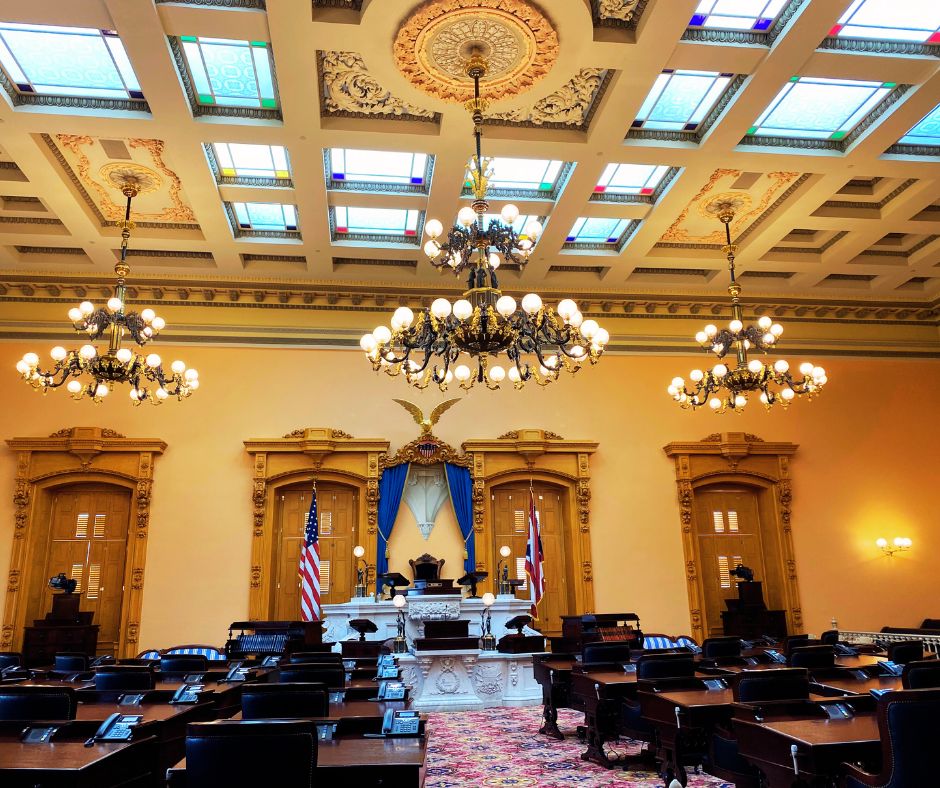-
What can Ohio regulators do to prevent future utility corruption scandals?
More transparency, greater accountability and use of enforcement authority could help prevent corruption and protect ratepayers, advocates say. This article is provided by Eye on Ohio, the nonprofit, nonpartisan Ohio Center for Journalism, in partnership with the nonprofit Energy News Network. Please join the free mailing lists for Eye on Ohio or the Energy News…
-
What the guilty verdicts in the HB 6 corruption case mean for energy policy and good government in Ohio
Experts see the case against former Ohio House Speaker Larry Householder and lobbyist Matt Borges as a test of limits on dark money in Ohio politics. By Kathiann M. Kowalski This article is provided by Eye on Ohio, the nonprofit, nonpartisan Ohio Center for Journalism, in partnership with the nonprofit Energy News Network. Please join…
-
Householder seeks to sow reasonable doubt in Ohio corruption trial
The defendant in Ohio’s largest corruption case gambles by taking the stand. Whether it and other factors will counter elements of the government’s case remain to be seen. By Kathiann M. Kowalski This article is provided by Eye on Ohio, the nonprofit, nonpartisan Ohio Center for Journalism, in partnership with the nonprofit Energy News Network.…
-
Householder trial: New evidence shows depth of long-suspected scheme
By Kathiann M. Kowalski This article is provided by Eye on Ohio, the nonprofit, nonpartisan Ohio Center for Journalism, in partnership with the nonprofit Energy News Network. Please join the free mailing lists for Eye on Ohio or the Energy News Network, as this helps provide more public service reporting. Ohio’s largest corruption case continues…
-
Why attention to detail matters in the government’s HB 6 corruption trial
Opening argument last month gave a bird’s eye view of what the prosecution plans to show in its criminal case. Now the government is laying out the hundreds of puzzle pieces from which they hope jurors will see the big picture. By Kathiann M. Kowalski This article is provided by Eye on Ohio, the nonprofit,…
-
Dark money helped Ohio utilities subsidize coal plants, delaying climate action at ratepayers’ expense
The biggest corruption scandal in Ohio’s history happened right under people’s noses, and much of the law at its center remains on the books. This story originated from the Energy News Network and Eye on Ohio and is part of ‘Climate & Democracy,’ a series from the global journalism collaboration Covering Climate Now. By Kathiann…
-
Ohio regulatory judge steps back from FirstEnergy’s HB 6 cases after subpoenaed records reveal his role
Greg Price’s recusal comes shortly after newly released documents show he played a part in policy discussions on HB 6 and responses to the FirstEnergy scandal. This article is provided by Eye on Ohio, the nonprofit, nonpartisan Ohio Center for Journalism in partnership with the nonprofit Energy News Network. Please join the free mailing lists…
-
Former Ohio regulator linked to $4 million payoff directed agency to limit response to FirstEnergy corruption
Former PUCO Chair Sam Randazzo shaped agency responses to HB 6 scandal: ‘Proactive’ show-cause action followed only after bad publicity. Randazzo and others closely tracked legislative actions as well. This article is provided by Eye on Ohio, the nonprofit, nonpartisan Ohio Center for Journalism in partnership with the nonprofit Energy News Network. Please join the…
-
Ohio cities settle civil claims related to power plant bailout
In a consolidated case, the Ohio attorney general’s office wants to move ahead on its civil racketeering case against FirstEnergy, Energy Harbor and others. This article is provided by Eye on Ohio, the nonprofit, nonpartisan Ohio Center for Journalism in partnership with the nonprofit Energy News Network. Please join the free mailing lists for Eye…
-
FirstEnergy says Ohio law at center of corruption probe protects it from ratepayer lawsuits
Class action case casts doubt on the integrity of the PUCO’s own actions in light of alleged corruption. This article is provided by Eye on Ohio, the nonprofit, nonpartisan Ohio Center for Journalism in partnership with the nonprofit Energy News Network. Please join the free mailing lists for Eye on Ohio or the Energy News…










